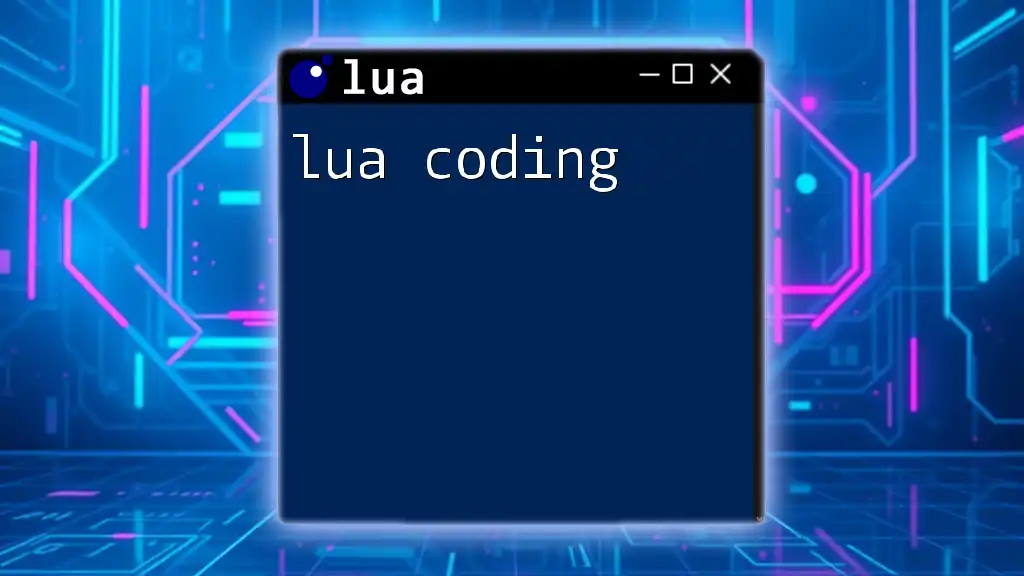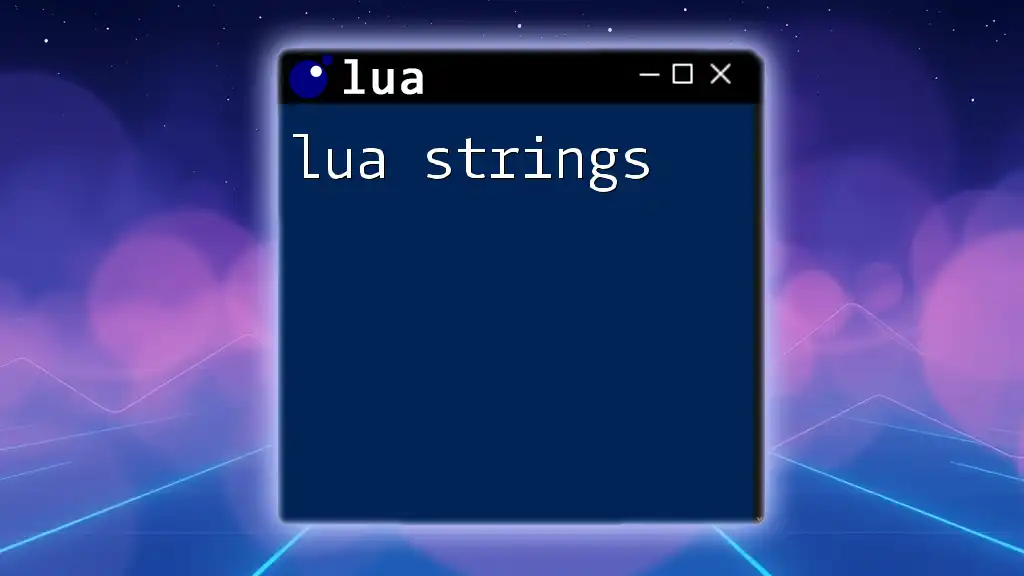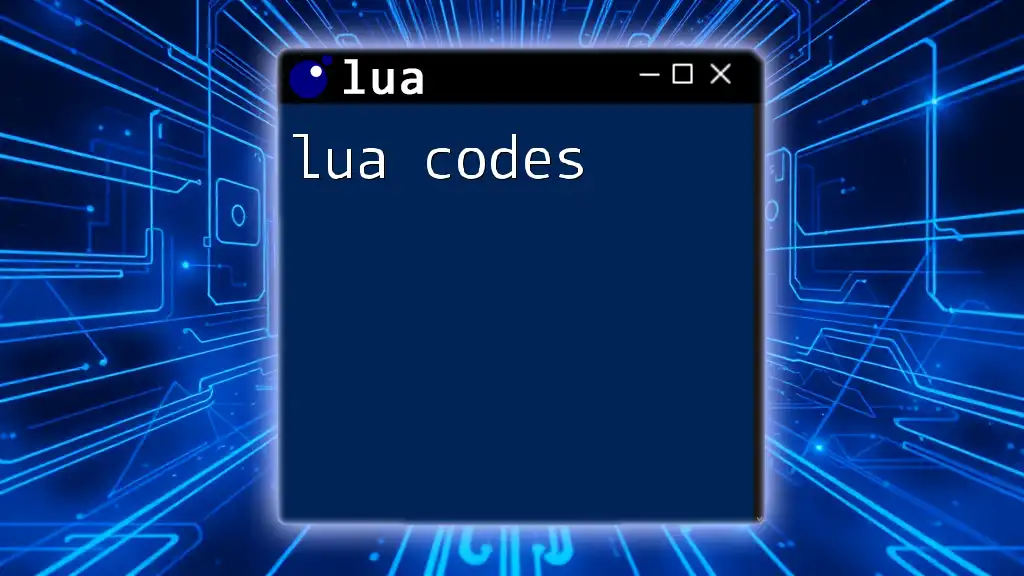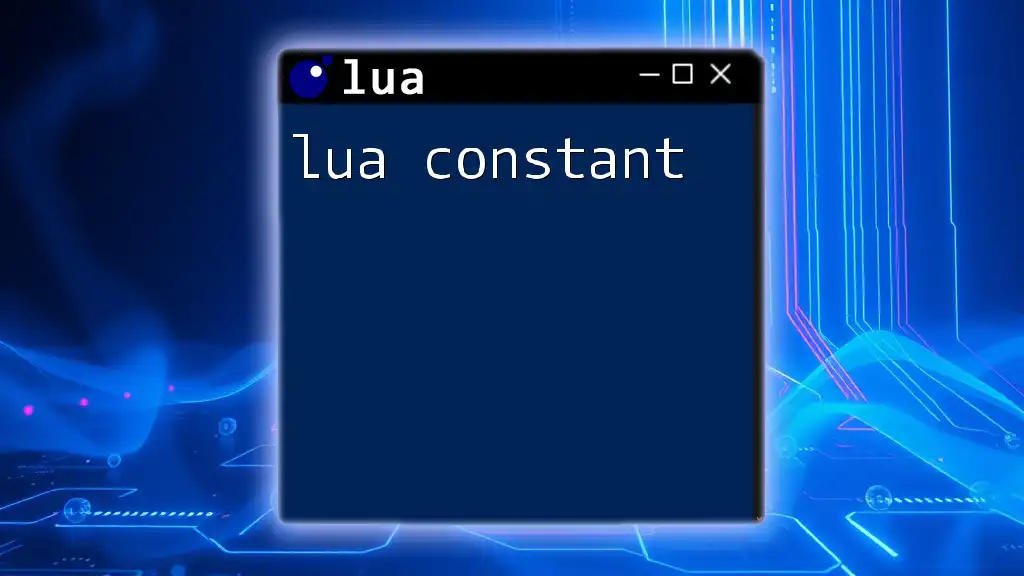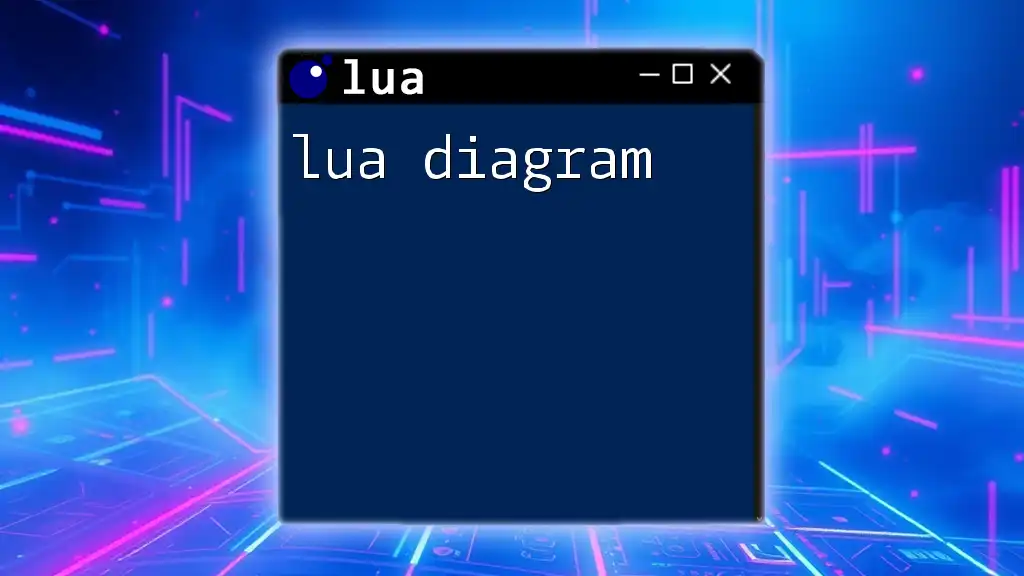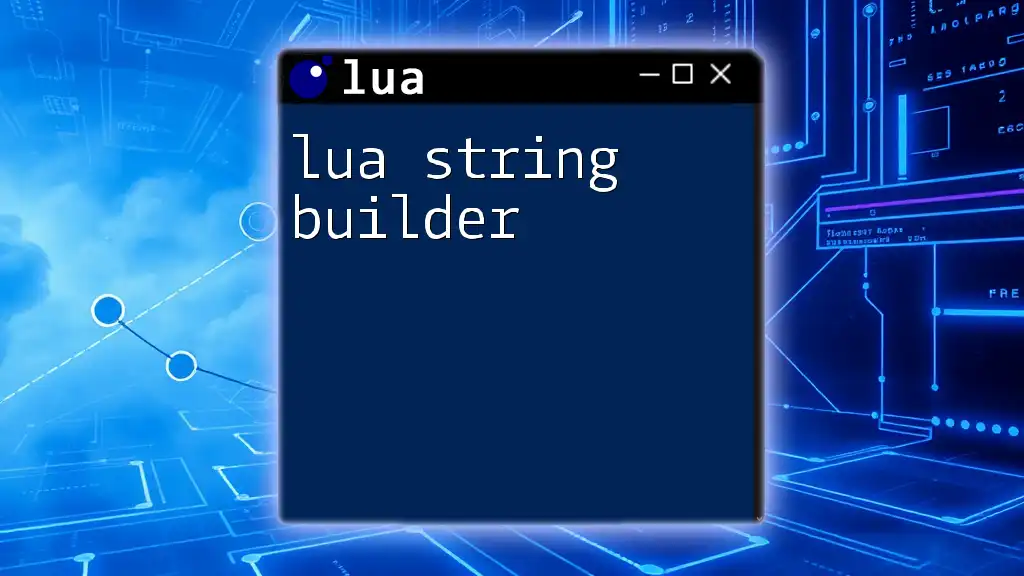Lua coding is a lightweight, high-level programming language designed for embedded use in applications, known for its simplicity and efficiency.
Here's a basic example of a Lua script that prints "Hello, World!" to the console:
print("Hello, World!")
Introduction to Lua Coding
What is Lua?
Lua is a powerful, lightweight scripting language designed for flexibility and a simple interface. Created in Brazil in the early 90s, it has gained fame for its use in game development, embedded systems, and application scripting. Its design philosophy centers around ease of integration, making it a favorite among developers who require custom scripting capabilities in software.
Why Learn Lua?
Learning Lua can open doors to various opportunities, especially in the gaming industry where it powers popular engines like Corona and Love2D. It is often praised for its beginner-friendly syntax, which facilitates quick learning and experimentation. Whether you are new to programming or an experienced coder looking to pick up a new language, Lua is a great choice.

Getting Started with Lua
Setting Up the Lua Environment
Before diving into Lua coding, install Lua on your machine. For various platforms:
- Windows: Download the Lua binaries from the official Lua website and follow the installation instructions.
- macOS: Use `Homebrew` to install Lua by running `brew install lua`.
- Linux: Most distributions have Lua packages. You can install them using the package manager, for example, `sudo apt-get install lua5.3`.
Once installed, choose a code editor or IDE that supports Lua. Popular options include ZeroBrane Studio and VS Code with the Lua extension.
Your First Lua Program
Let’s write a simple Lua script. Open your code editor and create a new file, `hello.lua`, and insert the following code:
print("Hello, World!")
Save the file and run it using the command line with the command `lua hello.lua`. The output should be Hello, World!, demonstrating the basic functionality of Lua.
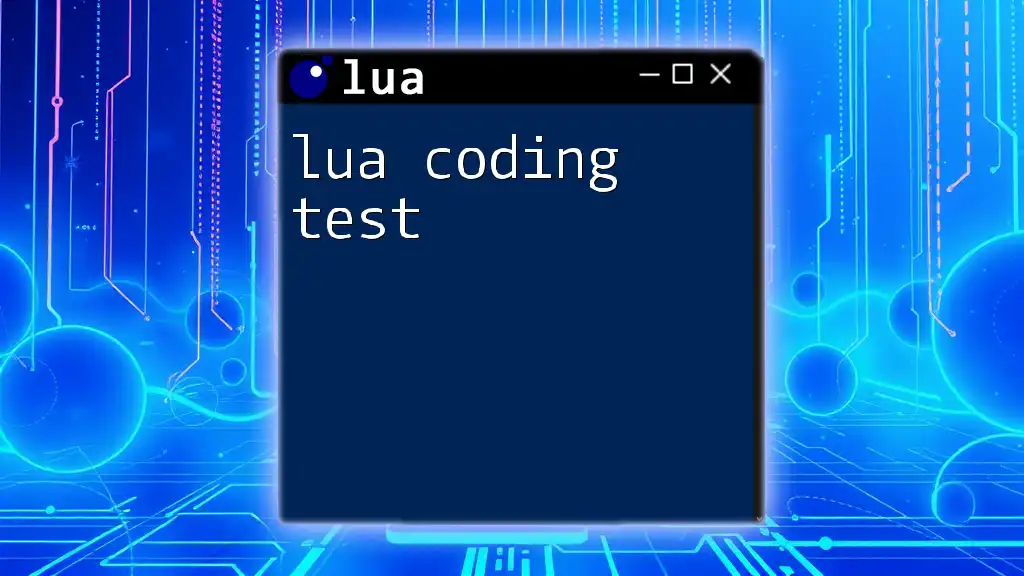
Basics of Lua Syntax
Variables and Data Types
In Lua, variables are dynamically typed, which means they don’t require explicit type declaration. The primary data types include:
- nil: Represents no value
- number: Numeric values (integers, floats)
- string: Text enclosed in quotes
- boolean: True or false values
- table: Key-value data structure
- function: Callable routines
Example of declaring and using variables:
local x = 10
local name = "Lua"
print(x, name)
This script defines a variable `x` with a numeric value and `name` as a string, printing both when executed.
Operators in Lua
Lua supports various operators:
- Arithmetic Operators: Include `+`, `-`, `*`, `/`, and `%` (modulus).
- Relational Operators: Use `==`, `~=` (not equal), `<`, `>`, `<=`, `>=`.
- Logical Operators: Include `and`, `or`, and `not`.
- Concatenation Operator: The `..` operator is used to concatenate strings.
Example demonstrating these operators:
local a = 10
local b = 5
print(a + b) -- Arithmetic
print(a == b) -- Relational
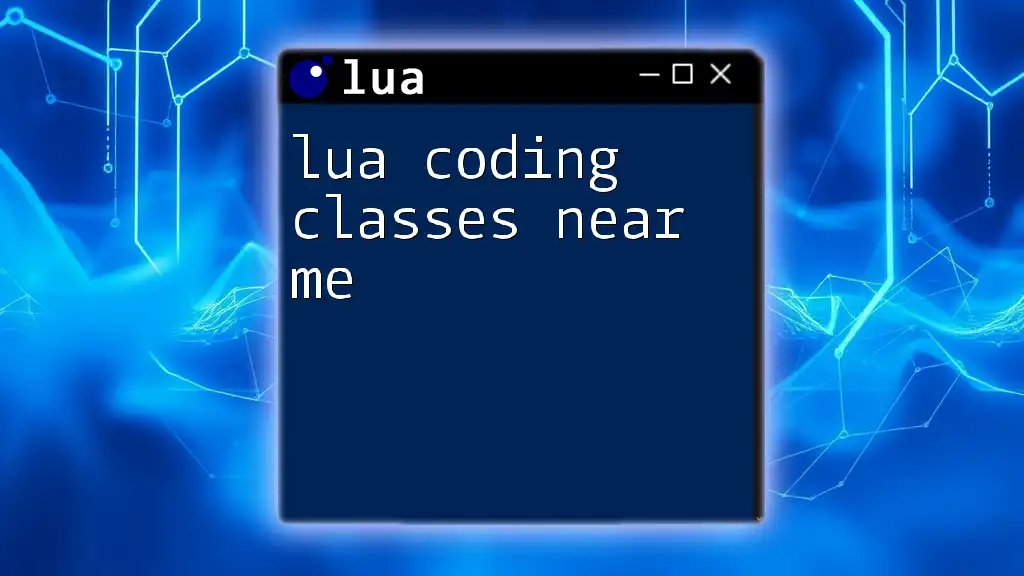
Control Structures
Conditional Statements
Conditional execution is fundamental in programming. In Lua, you can use `if`, `elseif`, and `else` for branching logic. Here’s how it works:
if x > 0 then
print("Positive")
elseif x < 0 then
print("Negative")
else
print("Zero")
end
This script checks the variable `x` and categorizes it as positive, negative, or zero.
Loops in Lua
Looping allows you to execute a block of code repeatedly. Lua provides `for`, `while`, and `repeat-until` loops.
Example of a for loop:
for i = 1, 5 do
print(i)
end
This loop will print numbers 1 through 5.
While loop example:
local count = 1
while count <= 5 do
print(count)
count = count + 1
end
This loop continues until the condition is no longer true.

Functions in Lua
Defining and Calling Functions
Functions encapsulate reusable blocks of code. Here’s how to declare a Lua function:
function greet(name)
return "Hello, " .. name
end
print(greet("World"))
This function takes a parameter `name` and returns a greeting string.
Variable Scope and Return Values
Understanding variable scope is crucial in Lua. Local variables are declared using `local`, making them accessible only within the defined block or function.
You can also return values from functions:
local function add(a, b)
return a + b
end
print(add(5, 3))
The `add` function returns the sum of `a` and `b`.

Advanced Lua Features
Tables: The Heart of Lua
Tables are Lua’s primary data structure, capable of representing arrays (indexed) and dictionaries (key-value pairs).
Creating a table example:
local fruits = {"apple", "banana", "cherry"}
print(fruits[1]) -- Accessing the first element
Here, `fruits` is an array, and accessing its elements is straightforward.
Metatables and Metamethods
Metatables allow for advanced features such as operator overloading. By defining a `__add` metamethod, you can control the behavior of the `+` operator for your custom data types.
Example:
local mt = { __add = function(t1, t2) return t1.value + t2.value end }
local obj1 = setmetatable({ value = 10 }, mt)
local obj2 = setmetatable({ value = 20 }, mt)
print(obj1 + obj2) -- Using the metamethod for addition
In this example, adding `obj1` and `obj2` uses the custom addition defined in the metatable.

Error Handling in Lua
Using Pcall and Xpcall
Effective error management enhances program robustness. `pcall` (protected call) allows you to execute a function in a protected mode, which prevents crashes from runtime errors.
Example:
local status, err = pcall(function() error("An error occurred") end)
if not status then
print(err)
end
This structure captures errors and provides feedback without crashing the program.
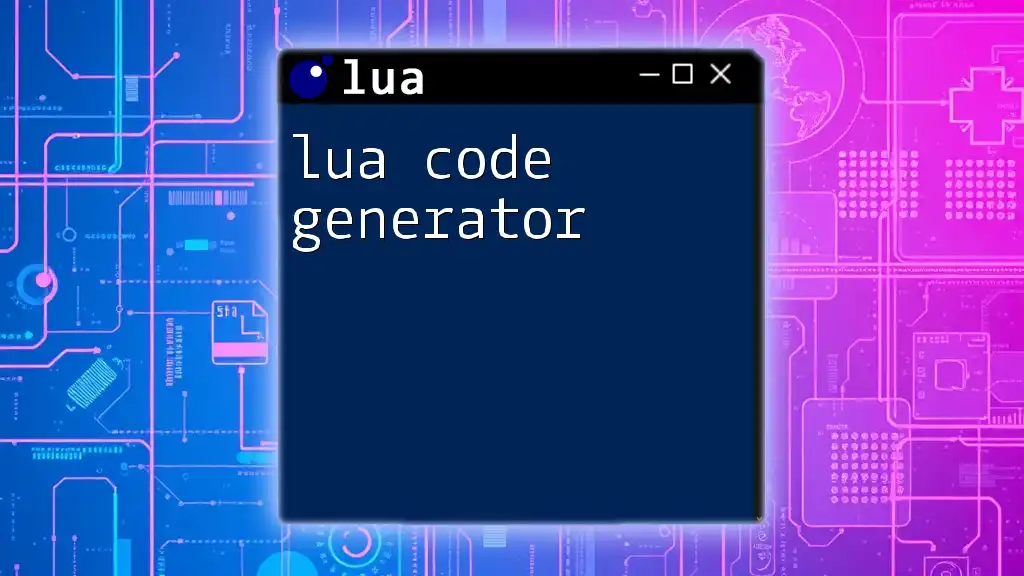
Example Project: Building a Simple Lua Application
Project Overview
Let’s create a simple Lua application that manages a grocery list. The application will allow users to add, remove, and display items.
Step-by-Step Code Walkthrough
Here’s a basic implementation:
local groceryList = {}
function addItem(item)
table.insert(groceryList, item)
print(item .. " added to the grocery list.")
end
function removeItem(item)
for i, v in ipairs(groceryList) do
if v == item then
table.remove(groceryList, i)
print(item .. " removed from the grocery list.")
return
end
end
print(item .. " not found in the grocery list.")
end
function displayList()
print("Grocery List:")
for i, item in ipairs(groceryList) do
print(i .. ". " .. item)
end
end
-- Example usage
addItem("Apples")
addItem("Bananas")
displayList()
removeItem("Apples")
displayList()
This script covers various concepts, including tables and functions, effectively utilizing Lua for real-world applications.
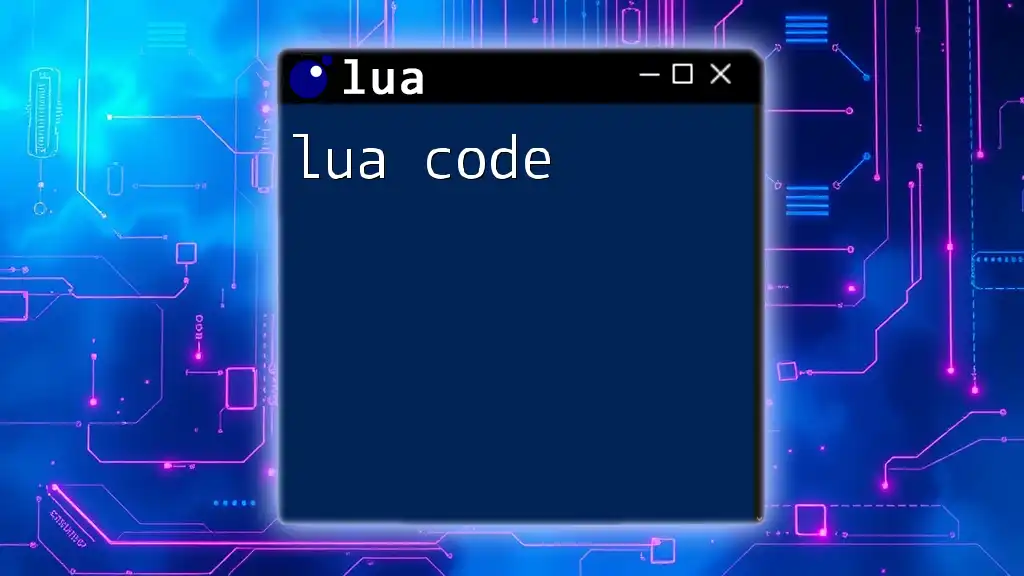
Conclusion
In this guide, we have explored key concepts in Lua coding, ranging from setup to advanced features such as metatables and error handling. Learning Lua equips you with the tools to create dynamic applications across numerous fields, particularly game development. As you continue your Lua journey, practice by developing small projects and diving deeper into the community resources provided.
Remember, the key to mastering Lua coding lies in consistent practice and experimentation. Go ahead, continue exploring!

Additional Resources
Visit the Lua Official Documentation to deepen your understanding, or check out community forums and recommended books to further enhance your Lua skills.

